The management model implemented in the NYPD in 1994, known as Compstat, showed the potential of intensive, quality management to reduce indicators of violence. The famous weekly meetings coordinated by Police Chief William Bratton with all the commanders of the NYPD districts, accompanied by maps and indicators updated almost in real time, became a benchmark that quickly spread around the world.
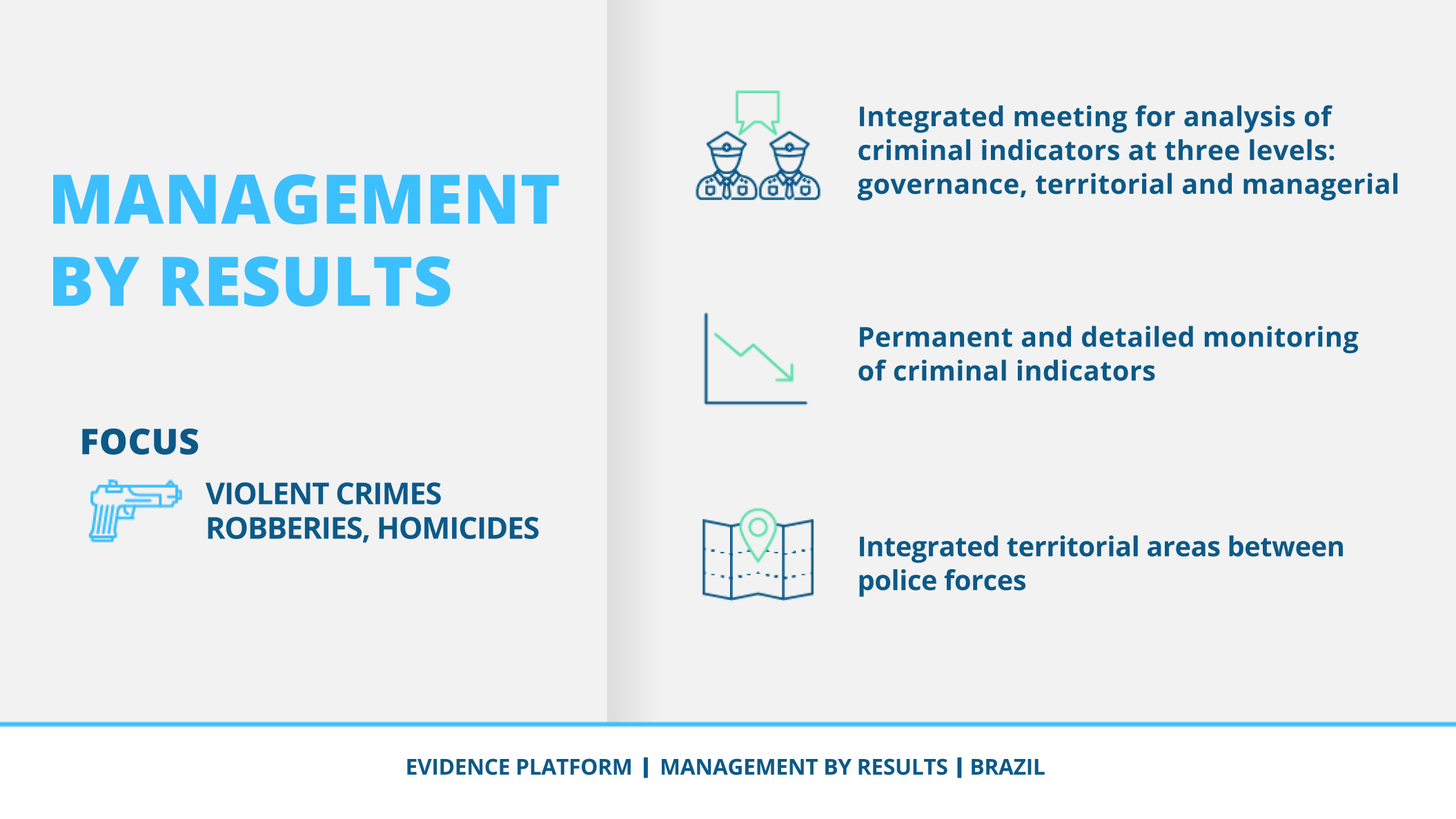
The idea arrived in Brazil in the early 2000s, following the movement of the managing for results which spread to different areas of public management. But the Brazilian experience has taken on different characteristics. While in the US the model has a detailed focus on policing, going so far as to analyze the individual performance of each police officer, in Brazil it has become a macro management model. Guided by objective indicators, an integrated planning routine and accountability, the model encourages integration between the security forces and has been an important and effective tool for managers to implement a coordinated security policy capable of reaching all the way to the top.
In general, the Brazilian model is characterized by the creation of integrated management areas between the Civil and Military Police, periodic management meetings at state, regional and local level, intensive monitoring of crime indicators and the definition of targets to be achieved.
A determining characteristic that can lead to the success or failure of management-by-results programs is the leadership of the Governor.
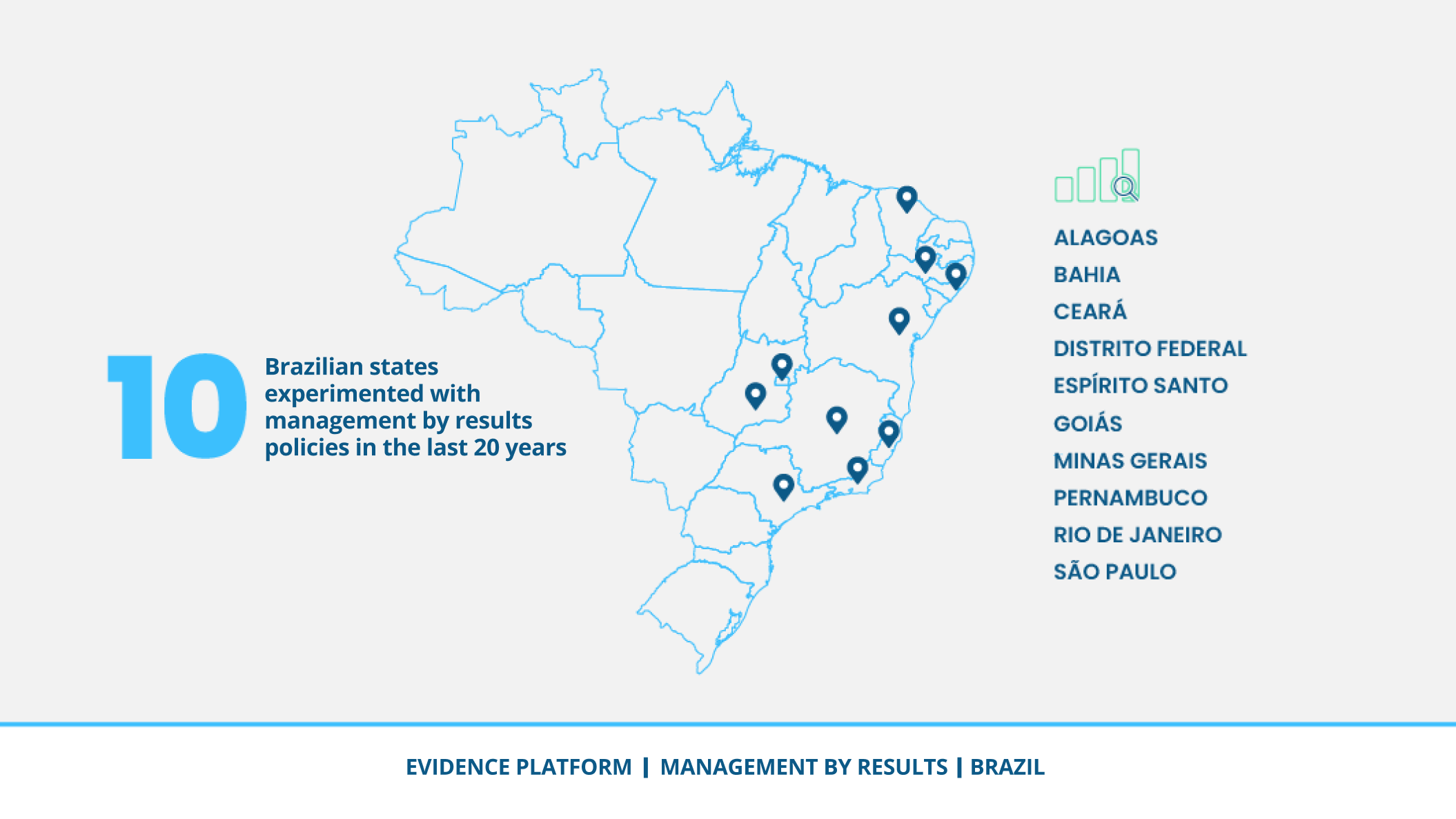
Ao mesmo tempo em que essa presença traz força política ao modelo, também lhe confere fragilidade, uma vez que mudanças de gestão ou uma identidade política podem afetar sua continuidade após trocas de governo.
Ao longo dos últimos 20 anos, Alagoas, Bahia, Ceará, Distrito Federal, Espírito Santo, Goiás, Minas Gerais, Pernambuco, Rio de Janeiro e São Paulo já experimentaram políticas de gestão por resultado, a grande maioria com resultados exitosos muito relevantes.
The First Experience
The Policing for Results Program, formulated jointly between the Military Police and the Center for Studies on Crime and Public Security (CRISP) of the Federal University of Minas Gerais, can be considered the first experience of this type of management in the country. The partnership arose from the need to introduce institutional innovations in the Military Police, which was going through a major crisis, in order to reduce the high rates of violence in Minas Gerais.
Through the program, the city of Belo Horizonte was divided into 25 policing regions, each under the responsibility of captains from the Military Police Companies, as public safety managers. In a room with multimedia resources to present maps and tables, each manager reported on the implementation of their operational deployment plan, in meetings called Operational Performance Evaluation Meetings.
The project managed to reverse the upward trend in crime in the city, which had been occurring since 1995, preventing around 5,675 violent crimes during the 22 months it was implemented. Based on this successful experience, in 2005 the Public Security Management Integration Program - IGESP, initially in Belo Horizonte, and then reaching 56 municipalities in 2008, which brought about the unification of police databases and the creation of an integrated analysis and statistics center.
Examples of success in Brazil
Management by results is one of the rare types of Brazilian programs that has been analyzed by rigorous impact assessments. It therefore has good quality scientific evidence to prove its effectiveness in different contexts across the country. A recent systematic review identified that at least 13 impact evaluations of different management by results programs have already been carried out, and all of them showed that this management methodology caused a significant drop in homicides in the states where it was implemented (1).
The experiences of the Holy Spirit, Pernambuco and Rio de Janeiro, are examples of how, in practice, very diverse state initiatives can have management by results as a central part of public security policies, contributing to the fight against violence and crime.
Present State (Espírito Santo)
Espírito Santo's Estado Presente (Present State) stands out both for the results it has achieved and for the length of time it has lasted, and above all for its contribution to the advancement of public security policies in Brazil. Launched in 2011, the program consists of shared goals and the monitoring and evaluation of results - from the operational to the strategic level - understood through a dynamic of management meetings.
According to an assessment by the Sou da Paz Institute, this methodology has led to a vast improvement in the state's public security structures, ranging from an increase in the number of police officers, including their integration, to investment in the structure of the prison system. An impact assessment of the program's effects, published by the Institute for Applied Economic Research, also highlights social actions with a focus on prevention, and the qualification of police investigative and intelligence work as fundamental characteristics for achieving positive results.
The study used the synthetic control methodology to determine the impact of the program in a comparative way. A control group was created, based on variables that resemble the characteristics of the treatment group, i.e. indicators similar to those of the state of Espírito Santo, to estimate what would have happened if the program had not been implemented.
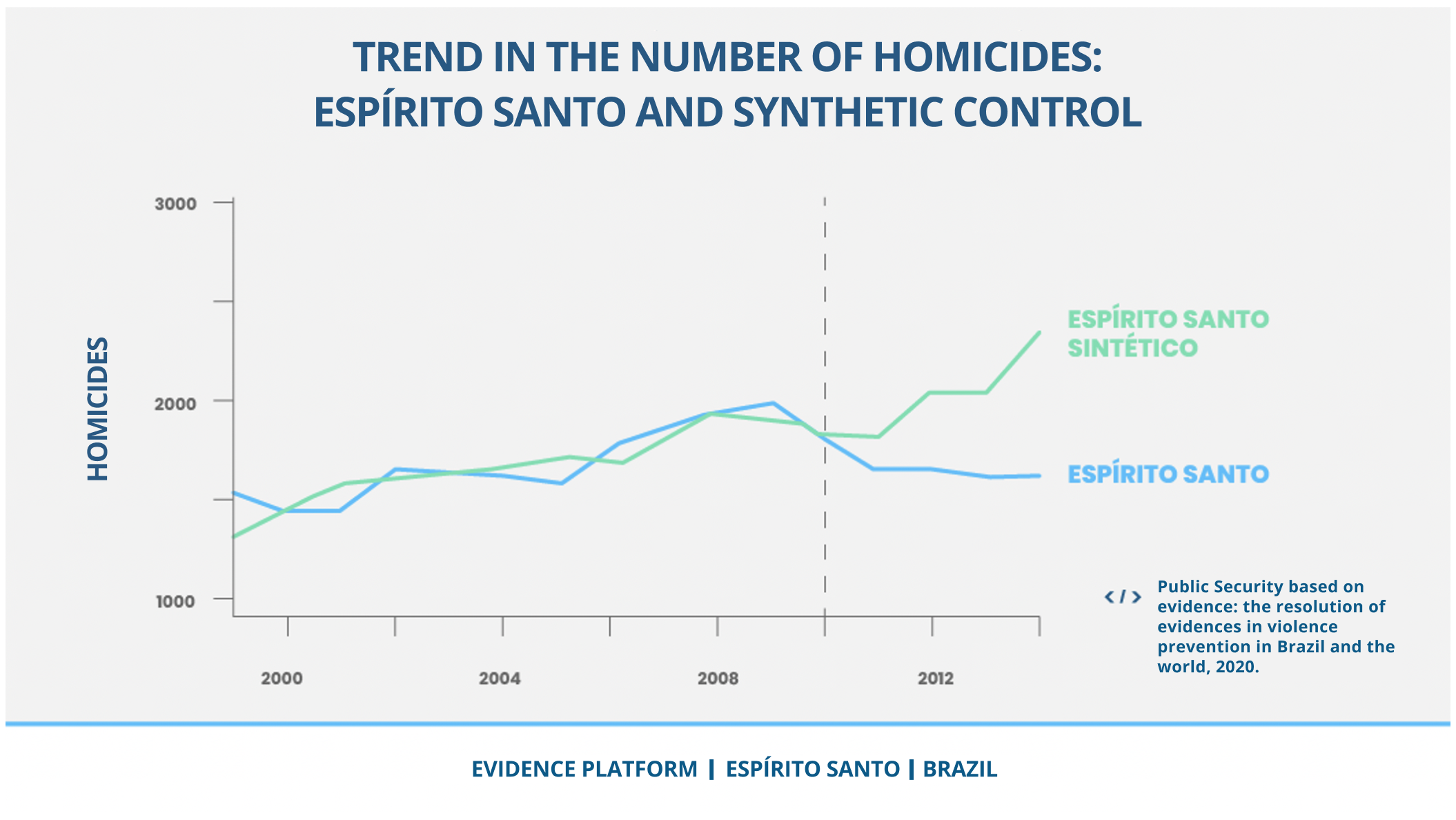
Between 2010 and 2014, the number of homicides in the state fell by 10.2%. If it hadn't been for Estado Presente, the research indicates that in the same period the number of homicides would have increased by 29%. The financial costs of implementing the policy were also evaluated and compared with the statistical value of the lives saved, estimating that for every real invested in the program, a gain in social welfare equivalent to R$2.40 was generated. (2)
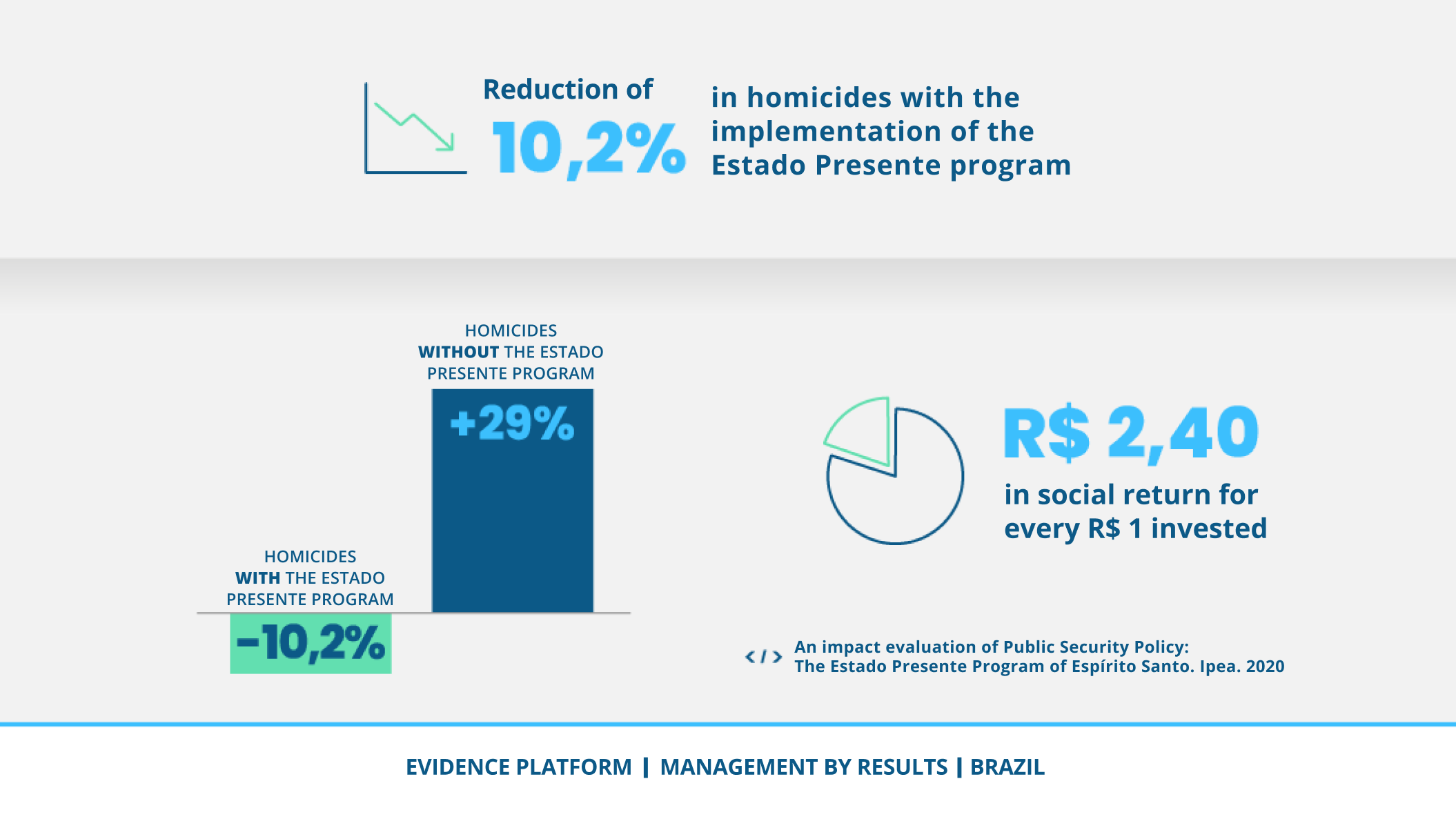
Known nationally and internationally, the Pact for Life, a public policy of the state of Pernambuco, regulated by Law 14024/2010 and subsequent amendments and decree, is also a promising experience for reducing homicides in Brazil. One of its main features is the involvement not only of public security institutions, but of various municipal, state and federal departments and bodies, and of society in implementing crime prevention actions.
The Pact for Life is focused on management and permanent monitoring of actions and results, and its basic goal is to reduce intentional violent mortality rates in Pernambuco by 12% per year. To this end, the state has been divided into 26 integrated areas, managed by a Management Committee, which meets once a week and monitors the actions developed through an integrated administration model. Another outstanding feature at the policing level is the incentives, in the form of awards, bonuses and gratuities for police officers working in the program areas.
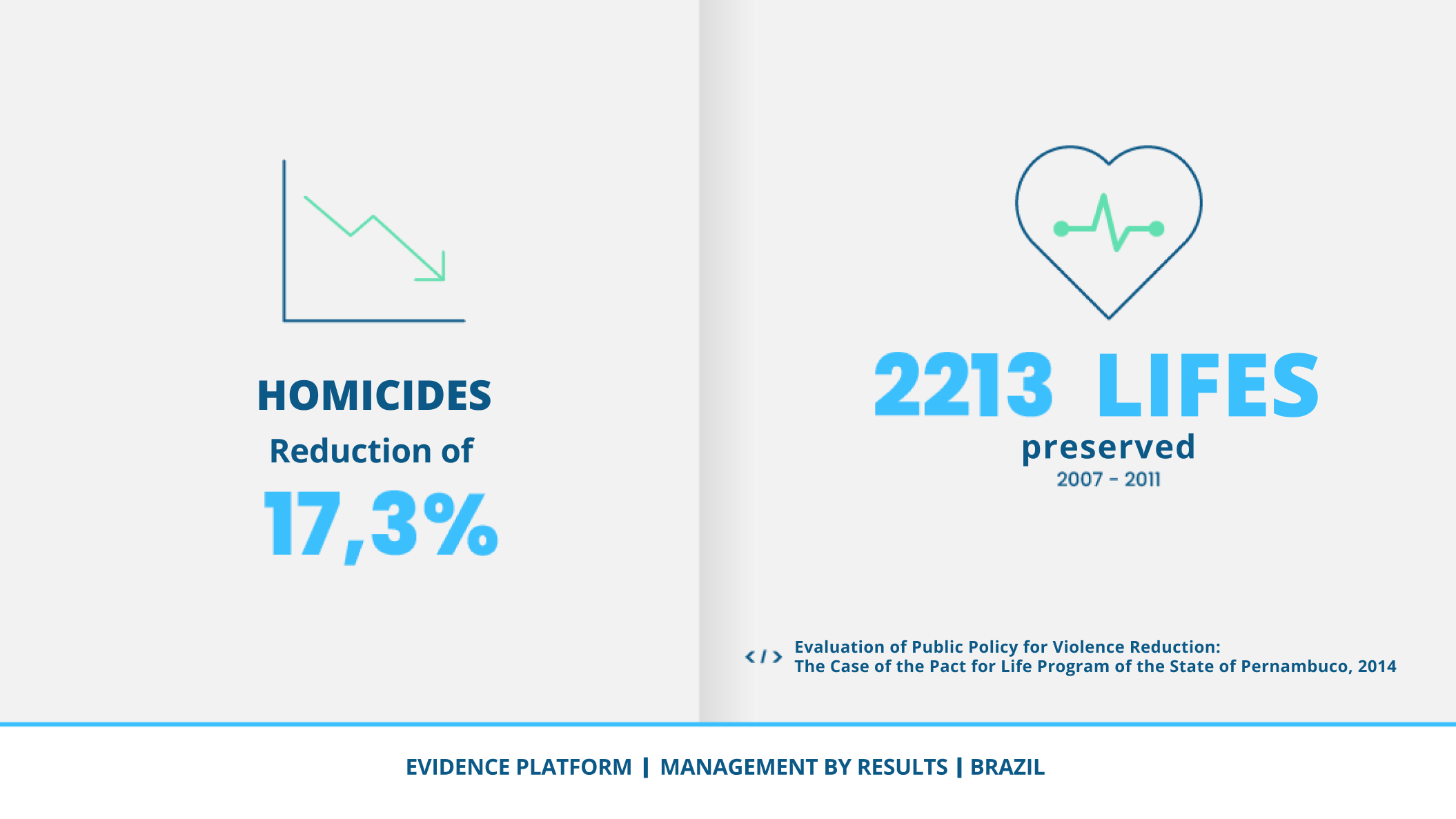
In terms of results, it is estimated that there was a 9.1 percentage point reduction in the state's homicide rate, which translates into 2,213 lives saved between 2007 and 2011. This is equivalent to a reduction of around 17.3% in relation to the number of homicides in 2007, the year the PPV was implemented (3). The researchers also used the synthetic control method to obtain the results.
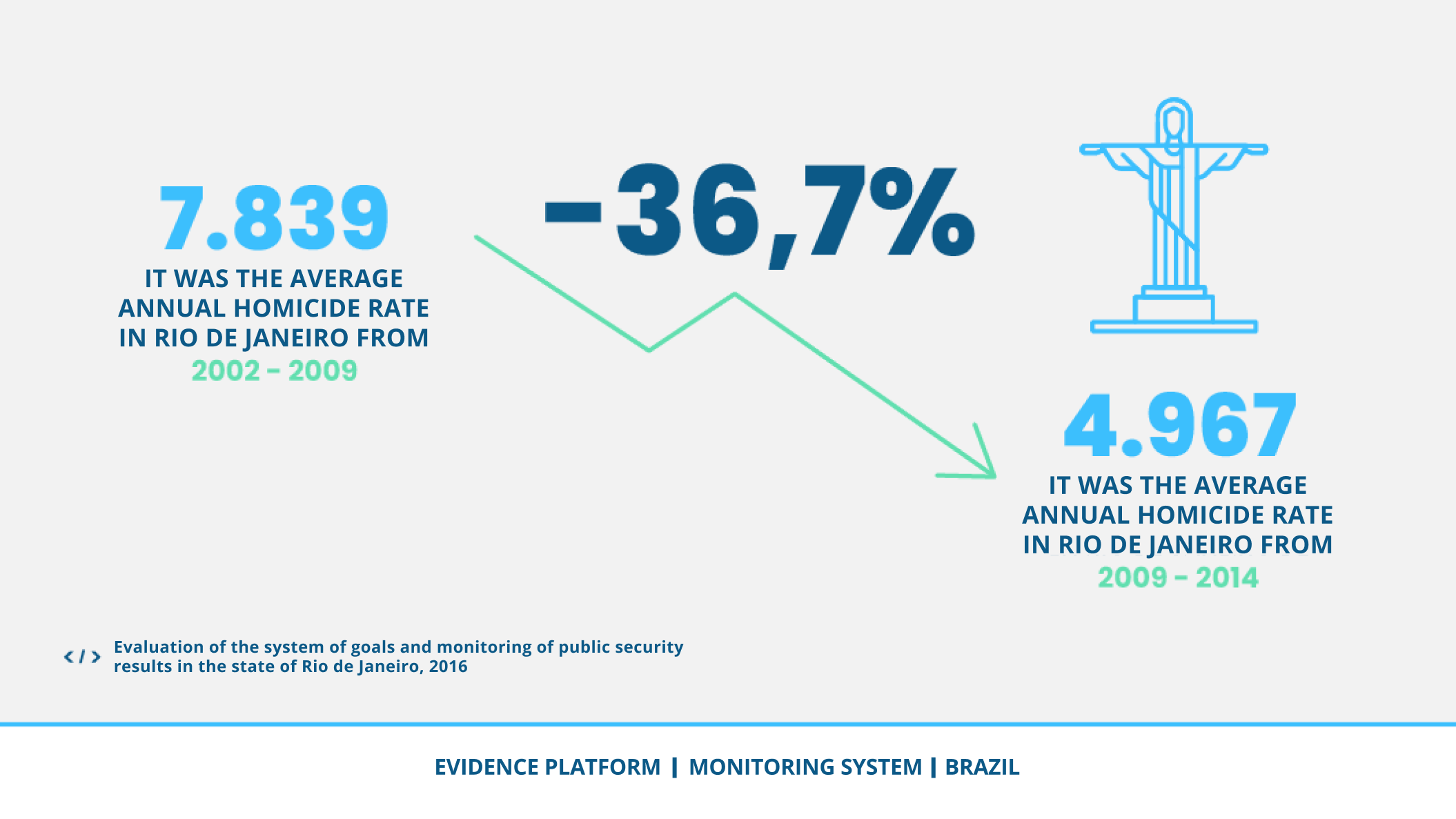
Integrated Monitoring System (Rio de Janeiro)
In Rio de Janeiro, the System of Goals and Monitoring by Results, or SIM, as it is better known, works to reduce pre-established crime indicators. The program focuses on integrating the work of the police, promoting a management culture that focuses on crime analysis through planning and recognizing the performance of agents, as well as spreading good practices.
In a report that evaluated data from the program between 2009 and 2015, Insper highlighted key aspects that contributed to SIM's positive results. These include a transparent and accessible database, which lends credibility to the initiative, general commitment among political leaders and the state security system, simple rules, and resilience. The state government also points to positive impacts in terms of the effectiveness of operations, the quality of records and policing tactics, according to the Sou da Paz Institute.
The Insper study evaluated how the biannual bonuses, instituted by the government for achieving targets in the fight against crime, influence police work and affect the behavior of the Integrated Public Security Areas (AISPs), the territorial divisions of the state that define the work of integrating the Military and Civil Police. The results showed that "the achievement of satisfactory partial results during the semester is associated with lower crime rates in subsequent periods" (4). The authors, however, draw attention to the need to deal with the discouragement and frustration of units that fail to meet their targets.
In the seven years prior to the implementation of SIM in 2009, the annual homicide rate in Rio de Janeiro, which was already falling, averaged 7,839 per year. From 2009 to 2014, the average number of homicides in the state was 4,967, 36.7% less than the previous period. (5)
References
- Kopittke, Alberto Liebling Winogron. Evidence-based Public Security: the evidence revolution in violence prevention in Brazil and worldwide. Doctoral Thesis [Doctorate in Public Policy] - Graduate Program in Public Policy, Federal University of Rio Grande do Sul. Porto Alegre, 2020.
- Silva-Neto, Darcy Ramos da Silva. Cerqueira, Daniel Ricardo de Castro; Coelho, Danilo Santa Cruz; Lins, Gabriel de Oliveira Accioly. Text for Discussion. A Public Security Policy Impact Assessment: Espírito Santo's Estado Presente Program. Ipea. 2020.
- Silveira Neto, R. da M.; Ratton, J. L.; Menezes, T. A. de; Monteiro, C. (2014). Evaluation of Public Policy to Reduce Violence: The Case of the Pact for Life Program in the State of Pernambuco. Proceedings of the XLI National Meeting of Economics. ANPEC - National Association of Graduate Centers in Economics.
- Cabral, S.; Firpo, S.; Costa, M. M. da; Viotti, L. (2016). Final research report for the Brava Foundation. Evaluation of the system of targets and monitoring of the results of public security in the state of Rio de Janeiro. INSPER Metrics.
- Figures based on data from the Sou da Paz report.
